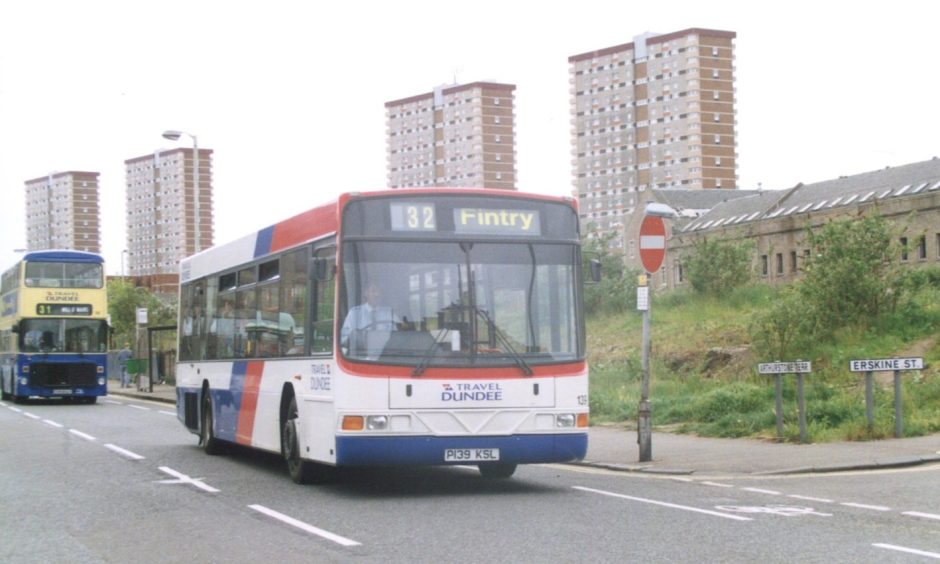
Dundee is Scotland’s oldest city and so it could not be said to have been growing up by the 1950s – but it was growing.
The city’s boundaries and housing were extending and transport links had to be improved.
Dundee’s fleet of trams was, in some cases, more than 50 years old and could not provide areas like Fintry and Kirkton with access to the city centre.
Decentralisation of industry legislation changed the city’s industrial landscape as firms like NCR, Timex and Holo-Krome transformed the manufacturing sector.
Urban renewal was accelerated and people moved in droves from the decaying heart of the city to the brave new world of electronics on the boundary.
So new buses were ordered.
They arrived in large numbers and were universally popular with passengers.
Dundonians were backing the bus and time was up for the trams era.
Derek Simpson has written extensively about Dundee buses.
He has collected 10,000 photographs of the city’s fleet during his lifetime.
Buses took off in Dundee schemes
He said the bus network became fully established in the 1930s when housing estates sprang up on land at Beechwood, Craigiebank, Linlathen and Mid Craigie.
The council built thousands upon thousands of houses in new schemes from 1948.
Tenements allowed for lots of living space to be constructed on small areas of land.
“This meant that there was a big demand from the new residents who required transport to and from school, work, nights out and shopping,” said Derek.
“Due to the huge cost of establishing a tram infrastructure beyond their existing network, it was decided that buses were going to be the most cost-effective solution.
“New bus services were established, starting with Blackshade in February 1946, Fintry in September 1949 and Camperdown in April 1953.
“By the early 1950s with the city’s boundaries and housing extending way beyond the original tram routes it was no real surprise the transport future lay with the buses.
“In 1955 the withdrawal of the trams from the Blackness to Downfield route in favour of new buses was called an experiment.
The end of the line for trams was coming…
“The reality was that once the decision was taken, there was no going back.
“Within 12 months the trams in Dundee would be no more.”
A study was led by transport consultant Colonel Robert McCreary.
It showed the cost of trams compared with the bus service was 26.700 and 21.204 old pence per mile and 95% of daily passengers preferred the buses.
The trams were mothballed
As a result, he advocated abandoning the tramway system.
The last tram ran from Maryfield to Lochee in October 1956.
The fleet was piled up afterwards and burned in a field at Marchbanks.
“New buses arrived in large numbers and were universally liked by the passengers and so the rest is history,” said Derek.
“The buses were able to reach places the trams were unlikely ever to have reached, forcing them to be consigned to history – in Dundee, at least.”
Tower blocks begin to rise across Dundee…
Dundee’s landscape changed dramatically the following decade.
Multi-storey blocks rose up including Menzieshill where a new bus service was introduced in March 1968.
Bus routes to Ardler and Whitfield followed in April 1969.
The 1A, 1B and 2 served the six 17-storey slab blocks which were the centrepiece of the Ardler estate.
The 15, 16 and 17 served the hexagonal pre-fab blocks of the Skarne area, an infamous part of Whitfield.
Complaints from angry bus passengers
August 1974 brought a service to the new houses being built along Nursery Road and beyond into Barnhill.
Dundee Corporation Transport Department struggled at times to get the correct frequency on these new routes.
It was often “purely down to guesswork”.
Derek said it was also critical that the route ran economically given the department’s financial position, which didn’t always make them popular.
“The Courier and Evening Telegraph letters pages, back in the day, was full of complaints from angry passengers in the new schemes,” said Derek.
“They either had to wait for ages for a bus or if one arrived it was full and would pass them by and make them late for work, school, social gatherings and so on.
“The last bus to the schemes at the weekends could be a rather colourful affair.
“Those who had enjoyed a good night out in the city centre on a Friday and Saturday were keen to show their singing talents to anyone who would listen.
“Not that there was any option!”
Bus travel has significantly dropped since the housing schemes were built.
Car ownership has progressively increased.
Is it the end of the road for bus services?
“In the 1960s the frequency levels of the most popular bus routes was between four to eight minutes at peak times,” said Derek.
“During the rush hour there were duplicate buses mopping up any passengers the scheduled service could not pick up.
“Contrast that with today’s frequency.
“You would be lucky to see a bus every 15 minutes and sometimes even longer.”
Although car seems to be king nowadays, Dundonians of all ages will likely have used the bus at some time in their life.”
Author Derek Simpson
That said, there is still an enduring fondness for Dundee’s buses.
Derek added: “One of the reasons often cited for this is the fact that many of Dundee’s most popular bus routes retain the same numbers as they did over 60 years ago.
“For example, the Downfield to Blackness bus service that replaced the trams in 1955 was numbered 22 and it is almost the same route today as it was back then.
“Although it now goes to Ninewells Hospital through Menzieshill.”
Many routes have come and gone where great factories like Timex used to reign.
There was no longer the need or demand for special works services for employees.
Special school services are similarly only a shadow of what used to operate.
“Although car seems to be king nowadays, Dundonians of all ages will likely have used the bus at some time in their life, whether it was to get to school, work and even going out with friends,” said Derek.
“The familiarity and fondness for the bus is something that crosses the generations.
“Arguably to this day, the bus still plays a vital part in keeping people connected.”
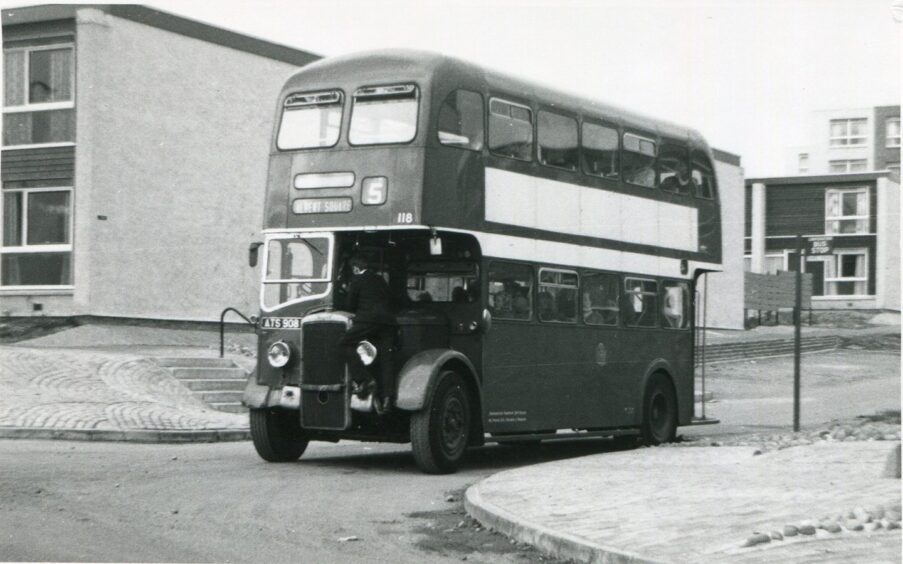
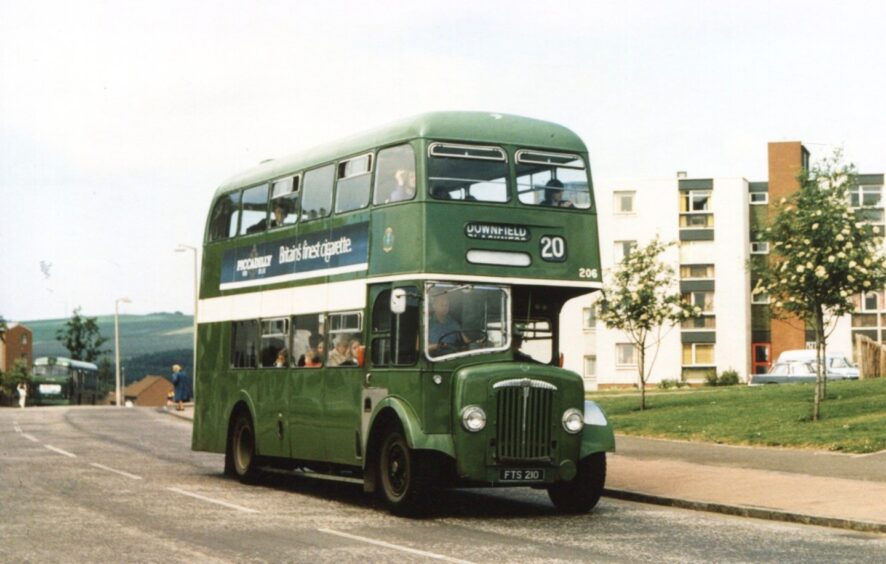
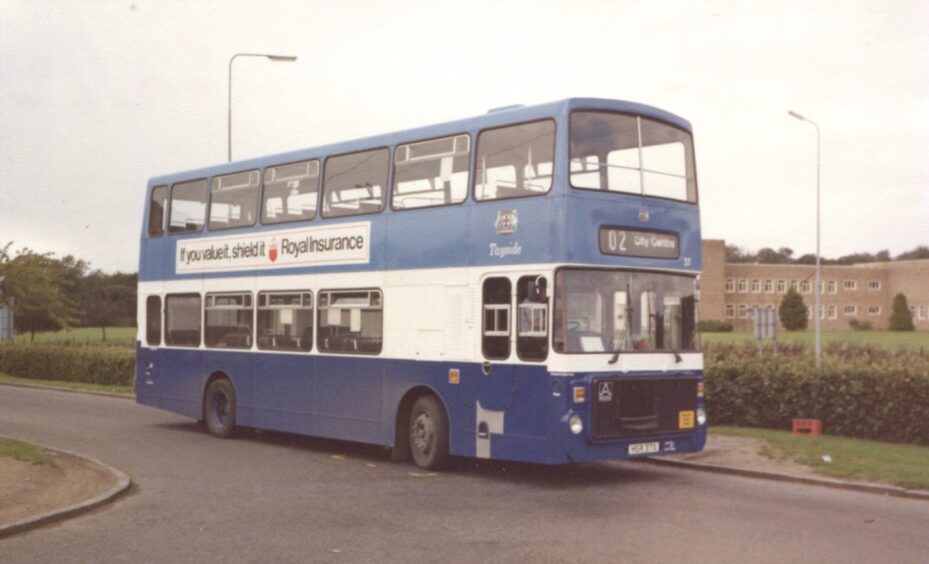
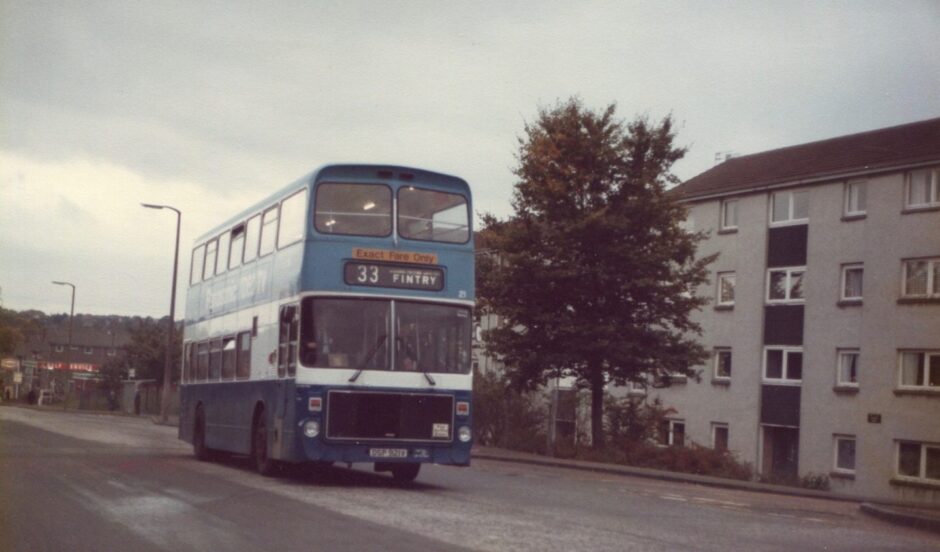
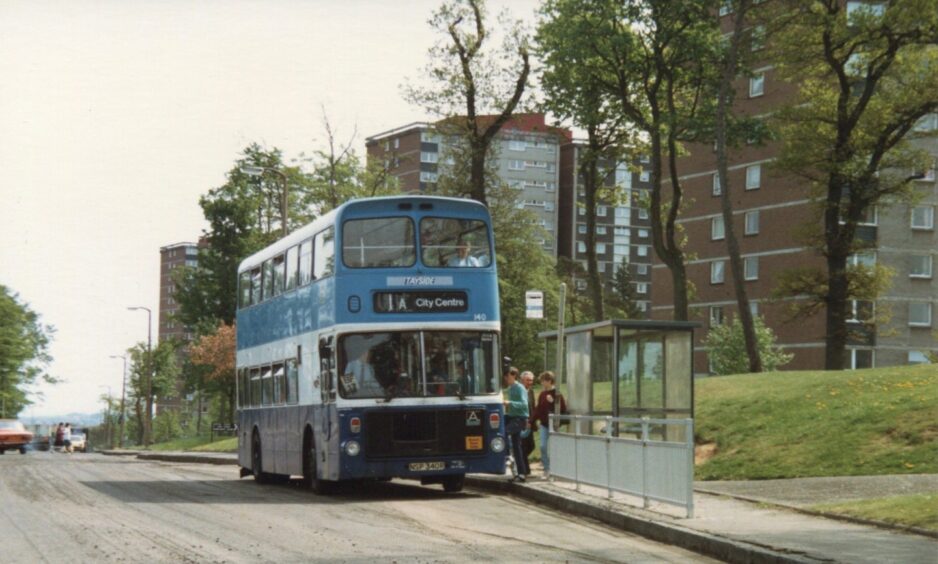
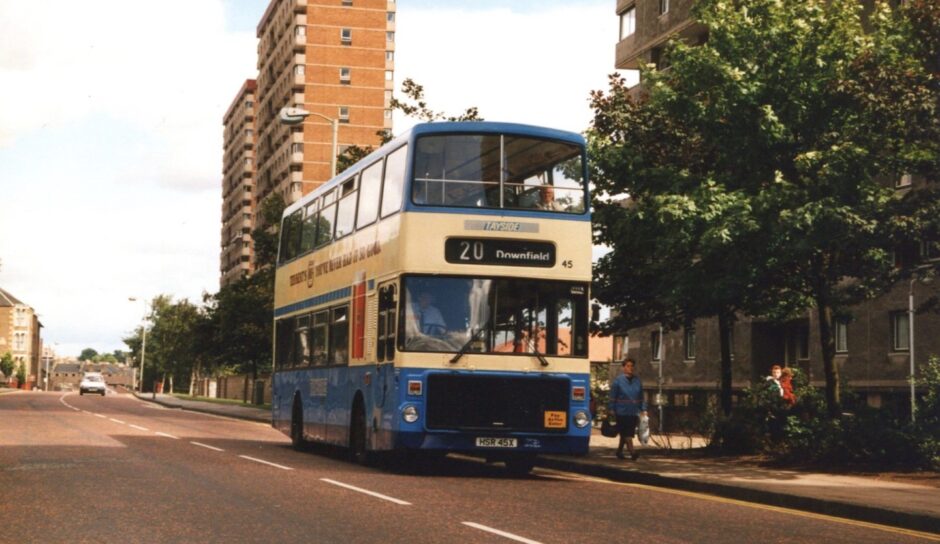
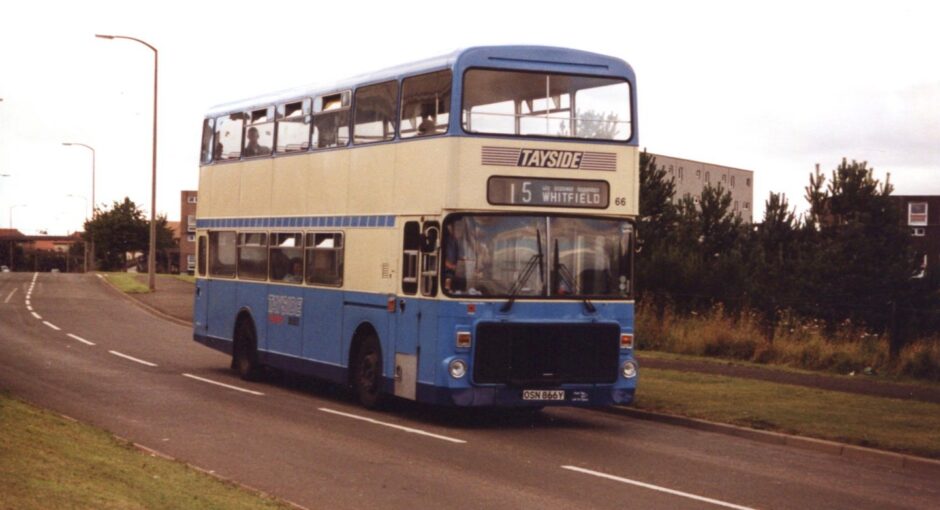
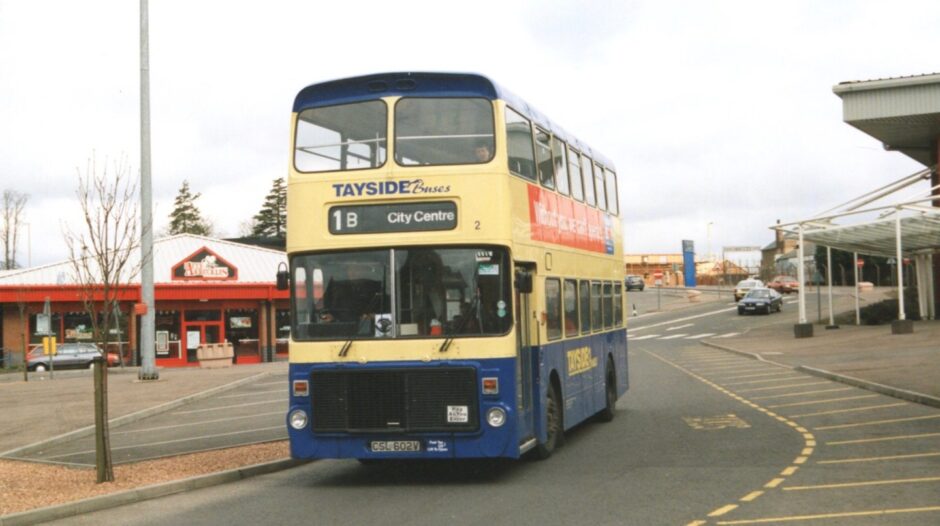
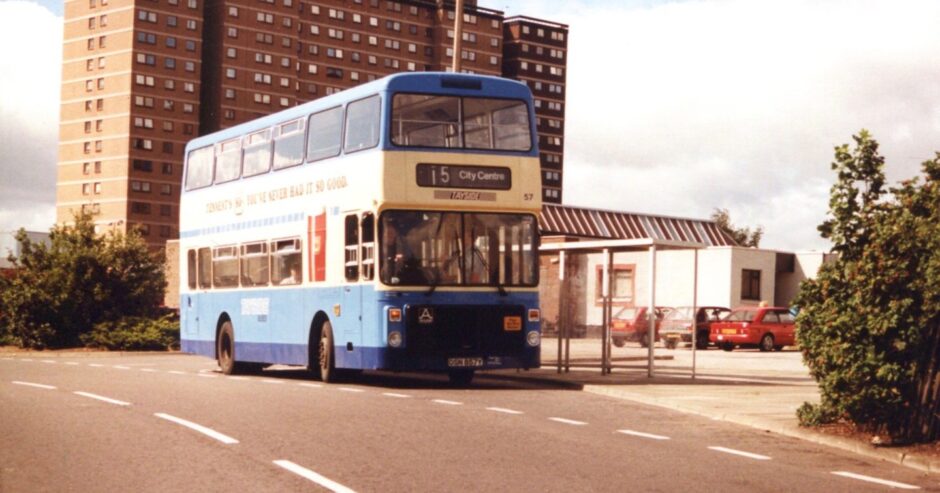










Conversation